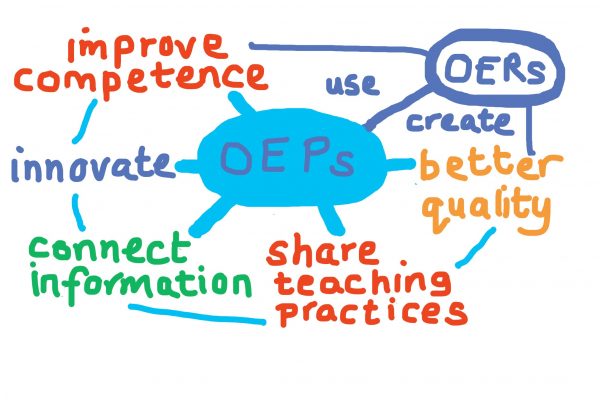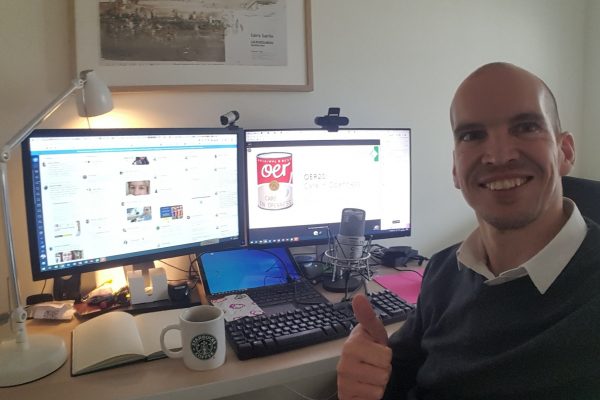For online teaching and collaborative work, these are great times. Many of our colleagues and institutions are sharing their work, and helping each other in this stressful situation. Sharing is caring and the essence of what teaching is. Unfortunately, many colleagues and organizations are not aware of or forget to share their material in a way that others can reuse it. In this post I quickly explain what I mean with this, what is needed, why and how.
Is there sharing the wrong way? I put in on the Internet!
Well, if you want to share material so that others simply can read or watch it, than probably no. If you do not put it behind a paywall or make others to sign up for an account to some social media in order to access your material, you are fine. However, if you want to share material so that others can reuse it, make changes it to it and adapt it to their context, then there definitely is. Just putting things on the Internet is not really helpful for that purpose.
Why?
Generally speaking, whenever you create something your material is automatically protected by international copyright laws and you are the copyright owner. If I want to reuse your material, I need to ask you for permission to do so. For many of us, this is too much of a burden and we do not do it. In a private context, we might reuse it anyway and breach copyright law. In a work context, we probably just refrain from reusing it completely. For you it is not so handy either. You have to answer unnecessary e-mails or phone calls of people who want to reuse, your workflow is disrupted and less people will reuse your material. So what can we do about this?
Creative commons is the solution!
There is a simple way to flip the process of asking for permission around. When you publish or upload something on the Internet, you can tell everyone beforehand what they are allowed and not allowed to do with your material. You publish your work with a Creative Commons license. Creative Commons licenses build on international copyright law and is a framework established by the non-for-profit organization Creative Commons. There are six different licenses for you to choose from which are also machine readable, so you and I can search for Creative Commons works easily in search engines. On a side note, when you share material that is reusable and remixable with a Creative Commons license in an educational context, these are also called Open Educational Resources (OERs). Your practice of publishing OERs or teaching with them is also referred to Open Educational Practices (OEPs). When you publish your research paper with an Creative Commons license, it is an Open Access publication.
A contemporary and hands-on example
Here’s an example which might help explain why this all matters. The VCU Rapid Transition Taskforce made this great support page for their faculty to help in this quick transition process from campus to online teaching. They released it with a Creative Commons license, allowing others to reuse it in NonCommercial contexts. My colleagues and me at the Centre for Teaching and Learning at Karlstad University in Sweden were quickly able to adapt it to our systems, tools and context, making sure that we are not reinventing the wheel and move on as quickly as possible. It saved us a lot of time and effort and made sure our colleagues could get timely and relevant help in this stressful situation.
Invest in sharing the right way
So, next time you want to share something which might be useful to others, please consider publishing it with a Creative Commons license. You simply need to answer two questions for yourself and there is a nice little helper out there to make this process very easy and smooth. You are still the copyright holder of your material and can do whatever you want to with your material. At the same time you allow others to build on it and adapt it to their needs and purposes.
If you want to discuss any of this, please leave a comment or get in touch in some other way. I am one of the few educators in Sweden who took the Creative Commons Certificate course (great example of a well designed online course, btw) and love to talk about Open Education!
For my Swedish friends, here the same message in a short video.
Invest in Sharing flickr photo by jonathan mcintosh shared under a Creative Commons (BY-SA) license





